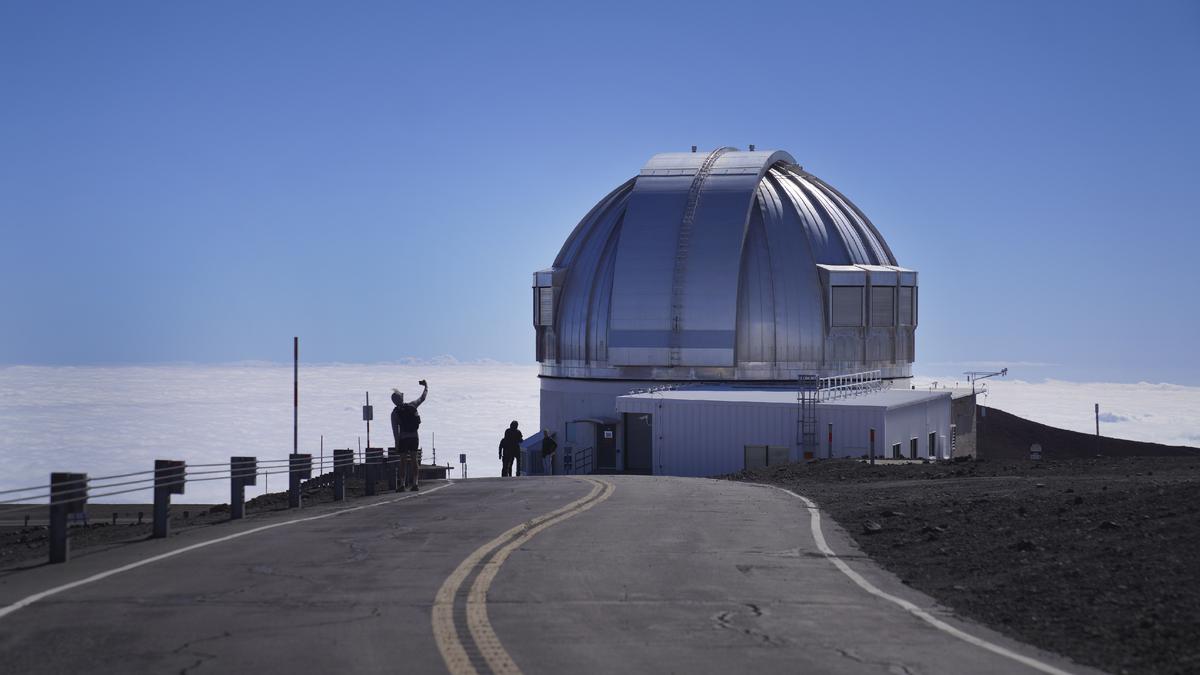Science Ministry team visits Hawaii to take stock of international telescope project (The Hindu)

- 13 Jan 2024
Why is it in the News?
In a signal of renewed enthusiasm for a global scientific project, an official delegation from the Department of Science and Technology visited Mauna Kea, an inactive volcano on the island of Hawai’i in the United States, to discuss “challenges” to the Thirty Meter Telescope (TMT) project.
About Thirty Meter Telescope (TMT) Project:
- The name "Thirty Metre" denotes the telescope's substantial 30-meter mirror diameter, composed of 492 glass segments seamlessly integrated.
- It is an international collaboration involving institutions such as CalTech, the Universities of California, Canada, Japan, China, and India, facilitated by the Department of Science and Technology (DST) and the Department of Atomic Energy (DAE).
- Significance: Upon completion, it will surpass the world's largest existing visible-light telescope in width by threefold.
- A larger mirror enables greater light collection, enhancing the telescope's capability to observe distant, faint objects.
- It is projected to be over 200 times more sensitive than current telescopes and possess 12 times the resolving power of the Hubble Space Telescope.
- Application: The TMT's primary purpose includes the study of exoplanets, specifically exploring whether their atmospheres contain water vapour or methane, potential indicators of extraterrestrial life.
- Opposition against Construction: The proposed site, Mauna Kea in Hawaii, is contested due to its sacred significance to native Hawaiians, who perceive such projects as desecrating the mountain.
Contribution of India:
- India expects to be a major contributor to the project and will provide:
- Hardware (segment support assemblies, actuators, edge sensors, segment polishing, and segment coating)
- Instrumentation (first light instruments), and
- Software (observatory software and telescope control systems) worth $200 million.
- Of the 492 precisely polished mirrors that the telescope needs, India will contribute 83.
- The Indian Institute of Astrophysics (IIAP) is leading the consortium of Indian institutions that are involved with the TMT project.
